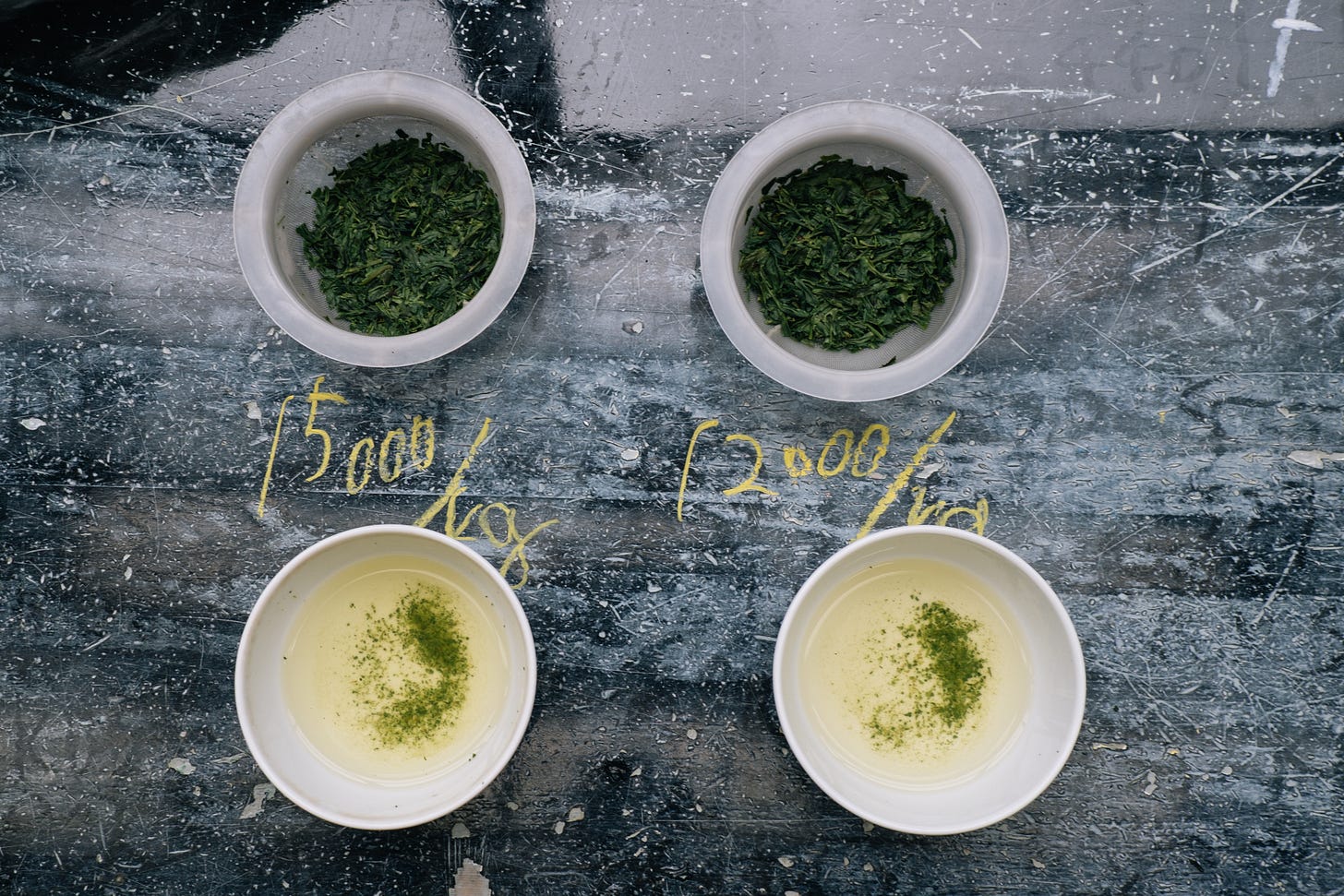In just the last two weeks, six media outlets have reached out for comments on the Matcha shortage. Who could have imagined things would reach this point? The level of global interest has been remarkable—a true testament to how far Matcha, and its community of fans, have come.
While the impact is certainly being felt by customers, it’s also deeply affecting those at the heart of the process: the farmers and producers. I’m currently in Los Angeles en route to Japan, but I’ve been in close contact with our partners at origin. And the feeling they’ve expressed to me over and over again? Bewilderment.
As I’ve shared before, the Matcha supply chain prior to sale follows a relatively linear path—but each step carries weight and complexity:
We are currently in Step 3 of the Matcha supply chain: the purchasing of tea at auction.
It’s important to note that not all tea goes through the auction system. There are two primary ways tea can skip the auction entirely:
Direct-to-customer sales – In this growing model, the farmer processes and sells the tea themselves, often to meet demand for single cultivar Matcha.
Contract sales – The farmer sells their tea directly to a manufacturer based on a pre-agreed price, bypassing the competitive bidding process.
Let’s rewind to Step 1 0f 2025 – Harvest.
Early reports suggest that 2025 will be a standout year for quality. Weather throughout 95% of the spring season was favorable, with a slow and steady warming and minimal heat spikes. This is ideal for tea growth. A spring that heats too quickly can accelerate leaf development and lead to a loss of complexity.
The cool spring of 2025 slowed growth, allowing flavor and aroma compounds to concentrate. This typically results in lower yields but higher quality. However, certain regions like Yame experienced a late frost that damaged fields and further reduced output.
The result? A high-quality but lower-yielding harvest—down roughly 11% year over year. On May 15th, 2025, 51,883kg of Matcha were transacted in Kyoto, compared to 58,263kg on the same date in 2024.
I bet you can guess where this is headed: higher quality product, lower availability, and massive global demand. The result? Prices are rising.
So now looking at the state of Matcha at step 3, the auction it makes sense.
Here’s a recent note from a producer we know and trust:
“At the Kyoto market, which opened on May 10, 2025, four trading sessions have
been completed as of May 16, totaling 55,392 kg in transactions, with an average
price of *9,058 per kilogram. Compared to past years, this represents a 184.8%
increase from 2024 and a 225.8% increase from 2023. These trends are expected
to continue for first-flush tea, as well as for later summer harvests.”
I know many of you are disappointed that we are currently sold out of most every matcha we sell, but we have already started preparing for the season ahead. We are in the midst of evaluating new products for potential sales this coming season. It’s obvious to us that a commitment to the emerging areas of Matcha production is not only the right move, it’s absolutely necessary if we want to continue to be able to grow.
For us, this represents a moment not only of challenge but one of opportunity. How do we build deeper relationships to support our producers - and how do we find the incredible products that we believe are still out there waiting to be found? While it is true that much of Uji and Yame have reached capacity - what lies ahead for the emerging Matcha regions like for example Kagoshima, Shizuoka, Mie and Miyazaki? Now is not the time for us to get comfortable with our supply chain. We have to dig, discover, taste and be a discerning as ever. We simply cannot buy only to increase our supply - that’s a slippery slope to losing sight of why I started this whole business. While I know factually there will come a time when all of the good quality Matcha is spoken for, I do not think we are even close to that yet.
As I set out to source teas, I also want to gauge the feeling within the industry. So to that point, I will be conducting interviews with Tencha farmers, Matcha producers and retailers throughout Japan to bring a more comprehensive view - directly from those working in the industry. How is the shortage affecting them? What do they see for the year ahead? What ideas do they have to manage their inventory?
I hope you will read along as I am excited to share their unique perspectives.
Thanks so much for reading.
Zach








Love that you guys are going to explore the emerging matcha regions – this is the most sensible way forward for growers, vendors and lovers of matcha — kudos from Kamakura.
Looking forward to hearing from people at the source..the farmers, millers etc